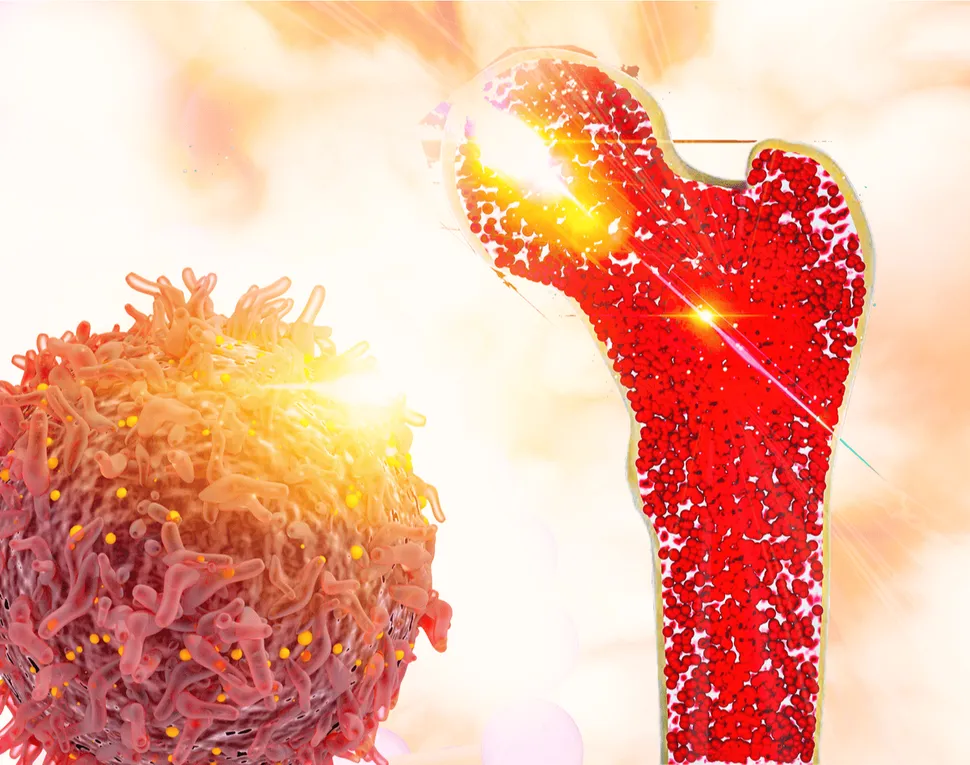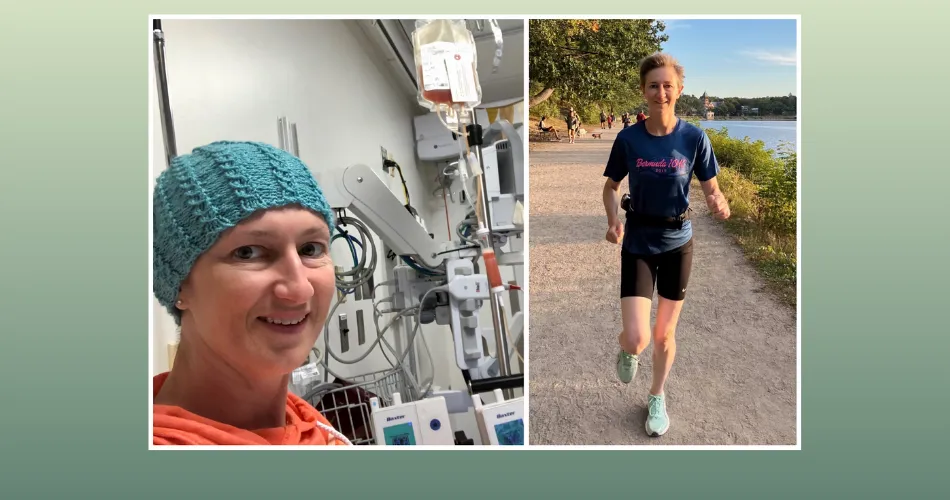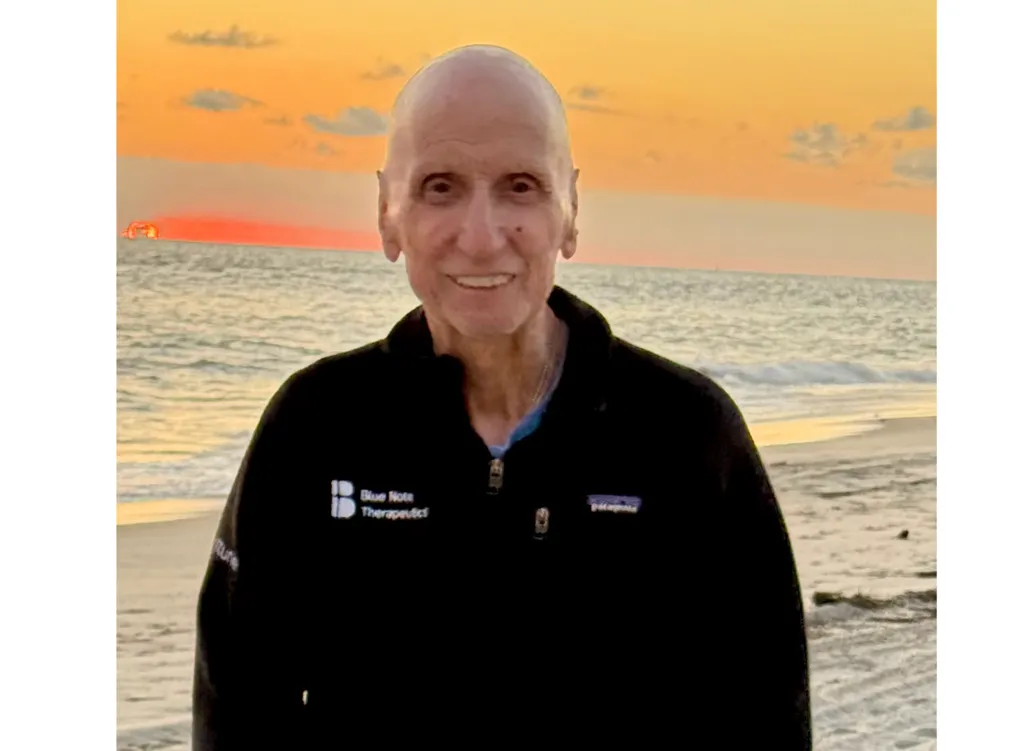Targeting Bone Cells to Stop AML

A new study has found that medications can be used to directly target the bone cells that come in contact with leukemia cells. The “new study shows that targeting neighboring cells in the bone marrow called osteoblasts (the cells which make bone)- could turn a friendly environment for leukemia cells into a hostile one.”
In AML, osteoblasts are conditioned to help more leukemia cells grow. This is accomplished by the leukemia stem cells releasing a molecule called kynurenine. Kynurenine attaches to the osteoblast (by a serotonin receptor, HTR1B). This sends a message to the osteoblast to help the leukemia cells grow (by an acute phase response protein, SAA1). SAA1 then signals the leukemia cell to produce more kynurenine. This process sets up a cycle for the leukemia cells to increase and allow AML to progress.
The study found that the messaging between the osteoblasts and the leukemia cells can be broken, presenting a new pathway to potentially treating AML. “In experiments with mice, researchers found that genetically eliminating the serotonin receptor that binds to kynurenine, blocks the progression of leukemia cells.”
An experimental drug called epacadostat, in combination with traditional chemotherapy, was used successfully to block the growth of kynurenine. The drug is being used in humanized mice that are carrying leukemia cells from patients that are in an AML relapse. Epacadostat is also being tested in other cancers.
The study “observed increasing levels of kynurenine and SAA1 in AML patients and in patients with myelodysplastic syndrome (MDS), another hematological cancer that often transforms to AML.”
This new approach to treating leukemia does not need a signal to any specific cell. All stem cells that are causing the disease are targeted because they all need osteoblasts to grow. By blocking leukemia cells and osteoblasts from communicating, “we might be able to stop the disease”.
A new study has found that medications can be used to directly target the bone cells that come in contact with leukemia cells. The “new study shows that targeting neighboring cells in the bone marrow called osteoblasts (the cells which make bone)- could turn a friendly environment for leukemia cells into a hostile one.”
In AML, osteoblasts are conditioned to help more leukemia cells grow. This is accomplished by the leukemia stem cells releasing a molecule called kynurenine. Kynurenine attaches to the osteoblast (by a serotonin receptor, HTR1B). This sends a message to the osteoblast to help the leukemia cells grow (by an acute phase response protein, SAA1). SAA1 then signals the leukemia cell to produce more kynurenine. This process sets up a cycle for the leukemia cells to increase and allow AML to progress.
The study found that the messaging between the osteoblasts and the leukemia cells can be broken, presenting a new pathway to potentially treating AML. “In experiments with mice, researchers found that genetically eliminating the serotonin receptor that binds to kynurenine, blocks the progression of leukemia cells.”
An experimental drug called epacadostat, in combination with traditional chemotherapy, was used successfully to block the growth of kynurenine. The drug is being used in humanized mice that are carrying leukemia cells from patients that are in an AML relapse. Epacadostat is also being tested in other cancers.
The study “observed increasing levels of kynurenine and SAA1 in AML patients and in patients with myelodysplastic syndrome (MDS), another hematological cancer that often transforms to AML.”
This new approach to treating leukemia does not need a signal to any specific cell. All stem cells that are causing the disease are targeted because they all need osteoblasts to grow. By blocking leukemia cells and osteoblasts from communicating, “we might be able to stop the disease”.

about the author
Lisa Foster
Lisa Foster is a mom of 3 daughters and 1 perfect grandchild, a puzzle lover, writer and HealthTree advocate. She believes in the mission of the foundation and the team that builds it forward. She calls Houston, Texas home.
More on Clinical Trials

Get the Latest Acute Myeloid Leukemia Updates, Delivered to You.
By subscribing to the HealthTree newsletter, you'll receive the latest research, treatment updates, and expert insights to help you navigate your health.
Together we care.
Together we cure.
3x Faster.










